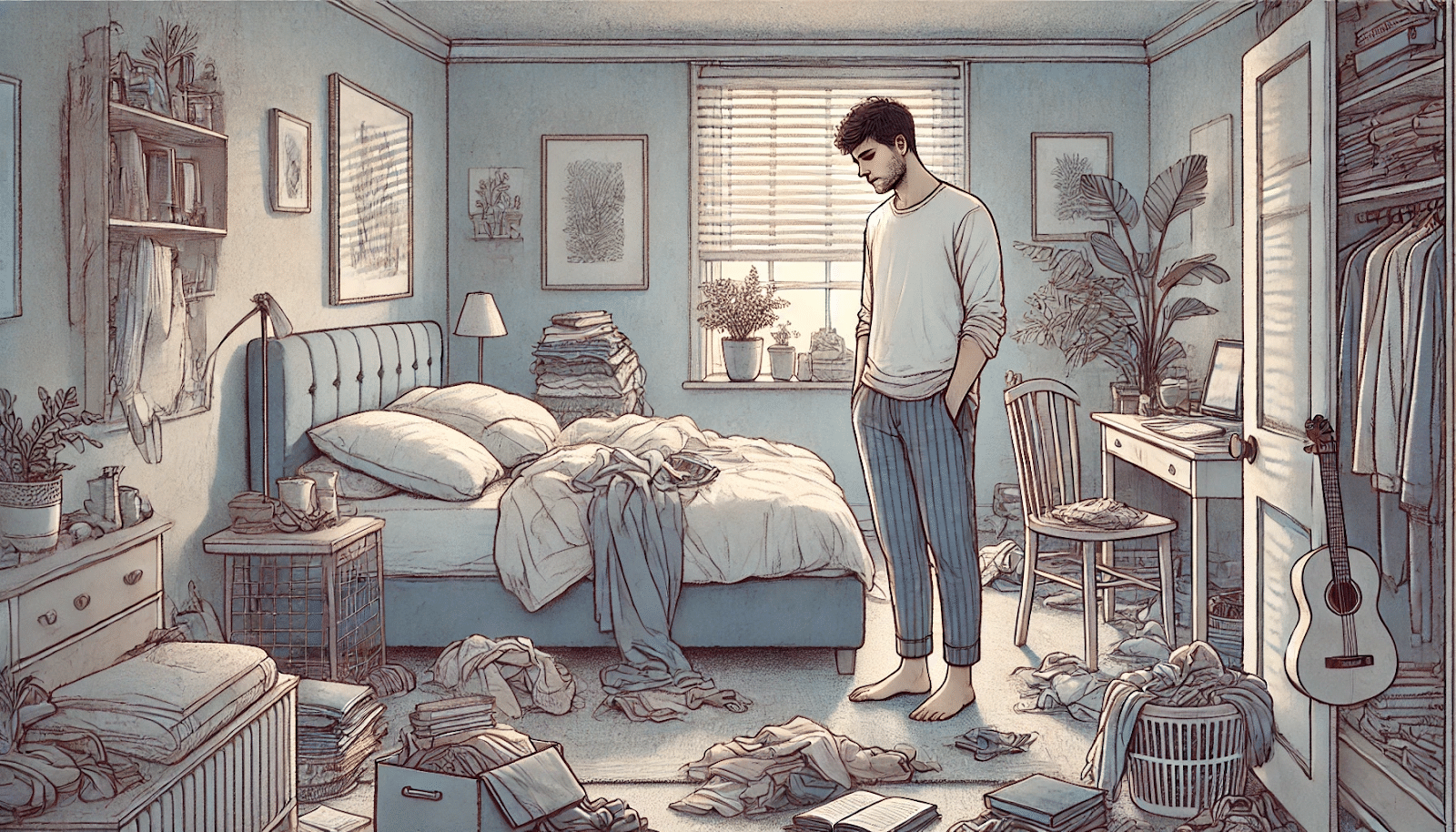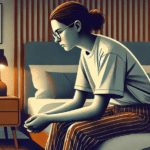Key Takeaways
- Schizoaffective disorder combines symptoms of schizophrenia with mood disorder symptoms, such as depression or mania.
- Schizophrenia primarily involves psychotic symptoms, such as hallucinations and delusions, and does not require a mood disorder component for diagnosis.
- Treatment for both conditions often includes a combination of medication, therapy, and support systems.
- At A Mission For Michael (AMFM), we understand that living with either condition requires a strong support network and evidence-based treatment programs, both of which we provide.
Schizoaffective Disorder vs. Schizophrenia Overview
Schizoaffective disorder and schizophrenia share some similarities, but they also have distinct differences that affect diagnosis and treatment strategies.
| Aspect | Schizoaffective Disorder | Schizophrenia |
| Definition | A chronic mental health condition featuring symptoms of schizophrenia plus a mood disorder (depression, mania, or both). | A chronic psychiatric disorder primarily characterized by psychotic symptoms without a persistent mood disorder component. |
| Core Symptoms | Psychotic symptoms (hallucinations, delusions, disorganized thinking) plus mood symptoms (depression and/or mania). | Psychotic symptoms such as hallucinations, delusions, disorganized speech, and behavior without mood symptoms as a defining feature. |
| Mood Symptoms | Present and must be prominent for a significant portion of the illness (depression, mania, or mixed episodes). | May occur but are not persistent or defining; mood symptoms are typically shorter and less severe. |
| Types | Bipolar type (mania and possibly depression) and Depressive type (major depression only). | No subtypes based on mood; symptoms categorized as positive, negative, and cognitive. |
| Duration of Symptoms | Mood symptoms present for a substantial portion of the illness; psychotic symptoms occur concurrently with mood episodes. | Psychotic symptoms persist for at least six months, with phases of exacerbation and remission. |
| Onset | Often later onset than schizophrenia; can have an episodic course. | Typically begins in late adolescence or early adulthood; tends to have a chronic, deteriorating course. |
| Prevalence | About 0.3% of the population. | About 1% of the population. |
| Diagnosis Criteria | Requires presence of psychotic symptoms plus mood disorder symptoms that occur together for a majority of the illness duration. | Requires at least one core psychotic symptom (hallucinations, delusions, disorganized speech) lasting at least one month, with overall illness lasting six months or more. |
| Treatment | Combination of antipsychotics, mood stabilizers, and/or antidepressants; psychotherapy and skills training; sometimes hospitalization or electroconvulsive therapy. | Primarily antipsychotic medications; psychotherapy focused on symptom management and social functioning; hospitalization as needed. |
| Prognosis | Variable; mood symptoms can complicate the course but treatment targeting both mood and psychosis can improve outcomes. | Often chronic with fluctuating severity; negative and cognitive symptoms may cause long-term disability. |
| Examples of Psychotic Symptoms | Hallucinations, delusions, disorganized thinking. | Hallucinations, delusions, disorganized speech, catatonia. |
| Examples of Mood Symptoms | Depressive episodes, manic episodes, or mixed mood states. | Generally absent or brief if present. |
Founded in 2010, A Mission For Michael (AMFM) offers specialized mental health care across California, Minnesota, and Virginia. Our accredited facilities provide residential and outpatient programs, utilizing evidence-based therapies such as CBT, DBT, and EMDR.
Our dedicated team of licensed professionals ensures every client receives the best care possible, supported by accreditation from The Joint Commission. We are committed to safety and personalized treatment plans.
Schizoaffective Disorder Defined
Schizoaffective disorder is a complex mental health condition characterized by a combination of schizophrenia symptoms, such as hallucinations or delusions, and mood disorder symptoms, like depression or mania. This dual presentation makes it unique and often challenging to diagnose.
Schizophrenia Disorder Defined
Schizophrenia is a serious mental health disorder characterized by disruptions in thought processes, perceptions, emotional responsiveness, and social interactions. People with schizophrenia may experience hallucinations, delusions, disorganized thinking, and reduced emotional expression.
Unlike schizoaffective disorder, schizophrenia doesn’t include the prominent mood disorder components such as depression or mania, though mood symptoms may be present to a lesser degree.

It becomes difficult to function and keep an orderly life when schizoaffective disorder or schizophrenia affects an individual.
Core Differences
Clinical Understanding
Clinically, schizoaffective disorder is seen as a bridge between mood disorders and schizophrenia. This dual nature complicates the diagnostic process, as symptoms may fluctuate or overlap. On the other hand, schizophrenia is characterized by persistent psychotic symptoms like hallucinations and delusions.
Mood Components
Mood swings, whether depressive or manic, can alter behavior and emotional stability. Schizoaffective disorder includes symptoms of mood disorders, such as depression or mania, alongside psychotic symptoms. In contrast, schizophrenia primarily involves psychotic symptoms without the mood disorder component.
Impact on Daily Life
Both schizoaffective disorder and schizophrenia can significantly impact daily life. Individuals may face challenges in maintaining employment, relationships, and personal responsibilities.
Diagnosis Process
The diagnosis process for these conditions involves a comprehensive assessment by mental health professionals. This includes a detailed evaluation of symptoms, medical history, and family history.
Because schizoaffective disorder involves mood disorder symptoms, clinicians must distinguish these from primary mood disorders or bipolar disorder. In schizophrenia, the focus is on identifying persistent psychotic symptoms and ruling out other possible causes, such as substance use or medical conditions.
Available Treatments
Medication Options
Schizoaffective disorder treatment focuses on managing both the psychotic and mood disorder symptoms. This often involves a combination of medications such as antipsychotics to control hallucinations and delusions and mood stabilizers or antidepressants to address mood symptoms.
Therapy is also important as it provides individuals with strategies to manage symptoms and improve daily functioning. Cognitive Behavioral Therapy (CBT) is particularly effective since it helps individuals challenge distorted thoughts and develop healthier coping mechanisms.
For schizophrenia, treatment primarily involves antipsychotic medications to control psychotic symptoms. Therapy can also be beneficial, helping individuals improve communication skills and daily functioning.

Getting an in-depth diagnosis is a good first step to take that will aid you in understanding the specific condition you are dealing with.
Lifestyle Changes
Lifestyle changes like regular exercise, yoga, meditation, a healthy diet, and good sleep habits can support the management of schizoaffective disorder and schizophrenia. These habits help reduce stress, boost mood, improve sleep, and may ease psychotic symptoms—working alongside medical treatment to support overall well-being.

Meditation and yoga can greatly enhance overall well-being by helping regulate emotions and creating space to pause and reflect before reacting.
Support Systems
Family, friends, and support groups can provide emotional support, encouragement, and practical assistance. Connecting with others who understand the challenges of living with these conditions can also offer valuable insights and coping strategies.
Moving Forward with Treatment With AMFM
At A Mission For Michael (AMFM), we believe that understanding the nuances of each disorder is essential for effective treatment, especially when distinguishing between conditions like schizoaffective disorder and schizophrenia.
“We see the person behind the diagnosis. Here, you’re not a patient with a condition to cure, you’re a human with a life worth rebuilding.”
With locations in California, Virginia, and Washington, we offer compassionate, personalized care with a low client-to-staff ratio of 6–8 clients per home. Our treatment approach blends evidence-based therapies like CBT with holistic options such as art and music therapy, all in a peaceful setting designed for healing.

We provide a structured, supportive environment where clients receive comprehensive care addressing both psychotic symptoms and mood disturbances.
Don’t face these challenges alone. Living with either condition presents difficulties, but with accurate diagnosis and proper treatment, individuals can develop effective coping strategies and improve their quality of life.
Frequently Asked Questions (FAQ)
How do symptoms differ between the disorders?
The primary difference in symptoms is the presence of mood disorder symptoms in schizoaffective disorder, such as depression or mania, alongside psychotic symptoms.
Can both disorders be treated similarly?
While there are overlaps in treatment, such as the use of antipsychotic medications and therapy, schizoaffective disorder treatment also requires addressing mood disorder symptoms.
What mood disorders affect schizoaffective disorder?
Schizoaffective disorder includes mood disorder symptoms that can be either depressive or manic. Depressive symptoms may include persistent sadness, loss of interest in activities, and feelings of hopelessness. Manic symptoms can involve elevated mood, increased energy, and impulsive behavior.
What are the common challenges faced by individuals with these conditions?
Individuals with schizoaffective disorder or schizophrenia often face challenges such as maintaining employment, relationships, and daily responsibilities. Social stigma and misunderstanding can also impact their quality of life.
How can AMFM support those with these disorders?
At A Mission For Michael (AMFM), our team of experienced professionals is dedicated to supporting individuals through therapy, medication management, and lifestyle modification.












